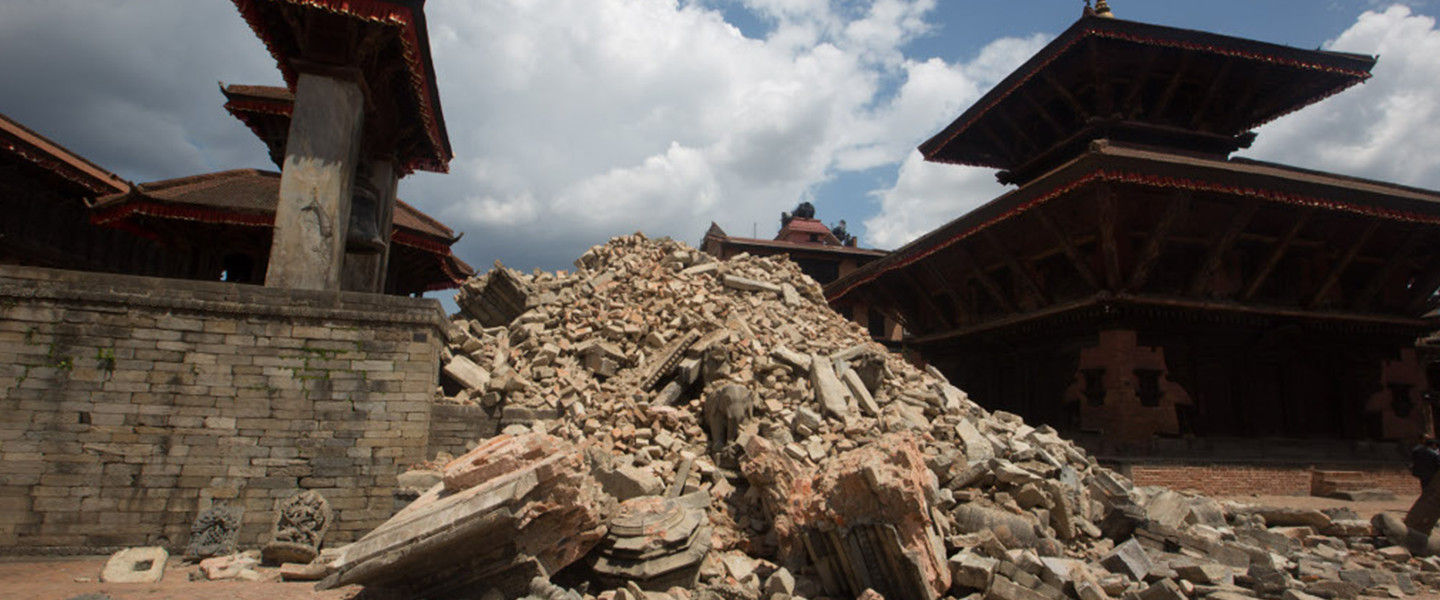Rebuilding Nepal


The morning of 25 April 2015 changed the lives of millions in Nepal.
The 7.8 magnitude earthquake, including a series of powerful aftershocks, was the worst to hit the country in 80 years. Nearly 9,000 people died, more than 20,000 were injured, and 2.8 million were displaced.
The response from all around the world has been overwhelming, with support for relief and rescue operations coming from many countries, including India, China, United Kingdom and the US. They will all play a crucial role in the rebuilding of Nepal.
It has also been hugely encouraging to see the response from within Nepal, with groups of volunteers from Kathmandu raising funds to buy essentials like biscuits, water, noodles, rice and tents for immediate relief.

Joseph Silvanus
Chief Executive Officer, Nepal
Thousands of such groups have travelled to remote areas, supplementing the rescue work of the Nepal government and other agencies. Many of our 450 employees in Nepal have taken part in the massive and ongoing volunteering effort.
Luckily, we were able to open for business the day after the earthquake, running our operations through a single Kathmandu branch for several days until our other premises were proven safe.
We’re the only international bank in Nepal, and many international NGOs and aid agencies operating in Nepal – more than 80 per cent of which bank with us – depended on our payment services for organising immediate relief.
We also offered food and shelter for many employees and clients who were forced by the powerful aftershocks to remain outdoors for weeks.
The resilience of local communities has been astonishing, but with the monsoon season about to begin, and many people in Nepal still living in makeshift tents, there is now an urgent need for more permanent shelter.

Joseph Silvanus
Chief Executive Officer, Nepal
Food relief is another priority. Nepal is a poor country, and the majority of the rural population relies on home-grown agricultural produce. With their food stock gone or buried under rubble, many will struggle to feed themselves and their families this year.
Rebuilding Nepal’s economy for the longer term will require a major international effort over the next few years.
The full extent of the damage is not yet known. Early estimates of the economic costs are running at over USD10 billion, with the cost of rebuilding homes and essential infrastructure alone expected to exceed USD5 billion, or more than a quarter of Nepal’s GDP.
Unable to cope on its own with a disaster on this scale, the government of Nepal has started talks with several countries and international institutions including the World Bank, the International Monetary Fund (IMF) and the International Finance Corporation (IFC).
A crucial meeting with major donors has been convened for the last week of June in an effort to address the funding gap.
While major highways and bridges are unaffected, some road networks in remote districts are impacted – a situation which is likely to worsen with the arrival of the monsoon, as Nepal is notoriously prone to landslides and floods.
As many as 14 hydropower projects have been damaged, resulting in loss of 150 MW of much-needed electricity. Manufacturing industries are likely to face rising fuel costs.
The property sector, on a recovery path after five years of slowdown, has been hit hard. From now on, the bulk of the housing demand will be for affordable housing – a challenging proposition for developers, many of who will have purchased land at exorbitant prices, before the earthquake struck.

Joseph Silvanus
Chief Executive Officer, Nepal
The rapid urbanisation of Kathmandu in recent years contributed to the scale of disaster. Due to the Maoist insurgency that began over a decade ago, many people had been forced to leave their villages in search of safety, with a large number setting up home in Kathmandu valley and surrounding areas. Many lived in poorly engineered houses that could not withstand the unprecedented tremors.
With four million inhabitants, the Kathmandu valley area is desperately short on power, drinking water, roads and sewerage – all of which will need to be addressed. And reconstruction must encompass earthquake-resistant building methods. For the Kathmandu valley in particular, adherence to building codes needs to be monitored strictly to avoid any future catastrophe.
Nepal is a country of staggering beauty and tremendous economic promise – particularly in hydropower and tourism. A strong and efficient reconstruction effort is vital to ensuring that tourists return to the trekking trails and that international investor confidence is revived, lifting Nepal to reach its true potential.